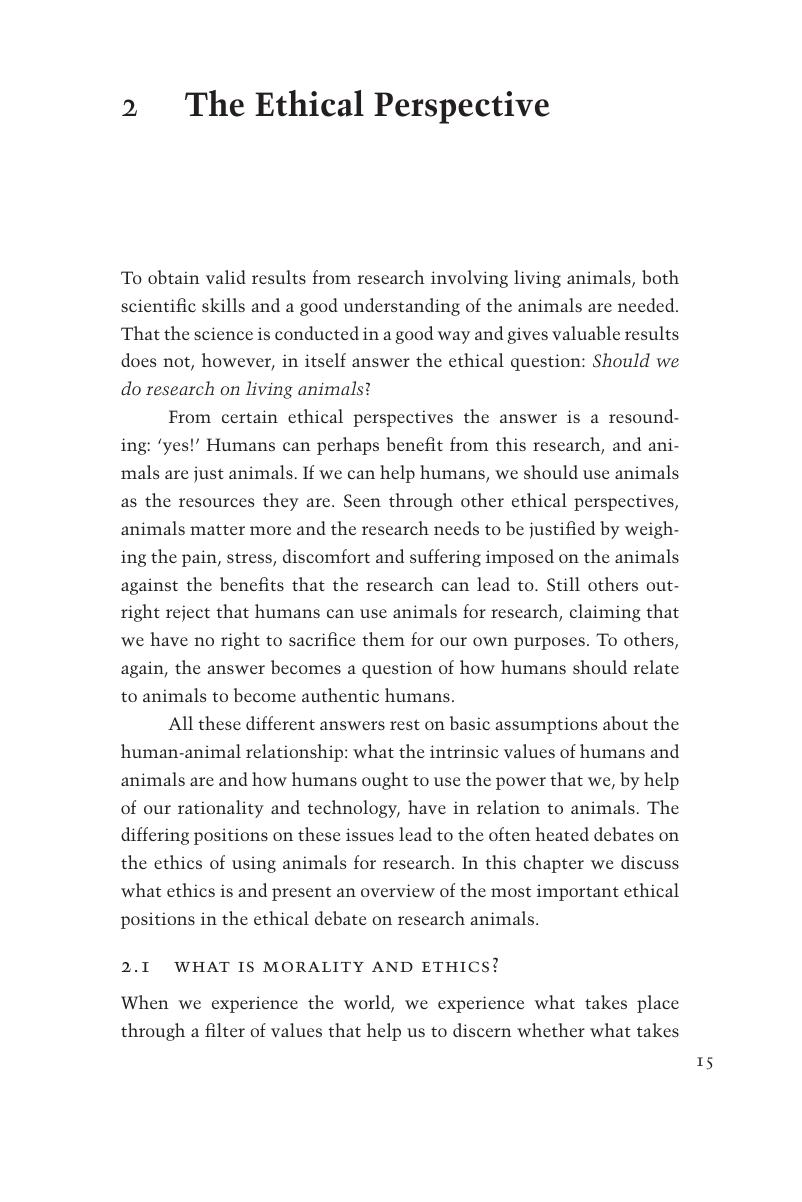Book contents
- Animal Ethics in Animal Research
- Animal Ethics in Animal Research
- Copyright page
- Contents
- Notes on the Authors
- Preface
- Acknowledgements
- 1 Research Ethics
- 2 The Ethical Perspective
- 3 The 3Rs and Good Scientific Practice
- 4 Applying Ethical Thinking and Social Relevance
- 5 Regulation and Legislation: Overview and Background
- 6 Public Involvement: How and Why?
- 7 The Future of Animal Research: Guesstimates on Technical and Ethical Developments
- Index
- References
2 - The Ethical Perspective
Published online by Cambridge University Press: 19 October 2017
- Animal Ethics in Animal Research
- Animal Ethics in Animal Research
- Copyright page
- Contents
- Notes on the Authors
- Preface
- Acknowledgements
- 1 Research Ethics
- 2 The Ethical Perspective
- 3 The 3Rs and Good Scientific Practice
- 4 Applying Ethical Thinking and Social Relevance
- 5 Regulation and Legislation: Overview and Background
- 6 Public Involvement: How and Why?
- 7 The Future of Animal Research: Guesstimates on Technical and Ethical Developments
- Index
- References
Summary

- Type
- Chapter
- Information
- Animal Ethics in Animal Research , pp. 1 - 14Publisher: Cambridge University PressPrint publication year: 2017



